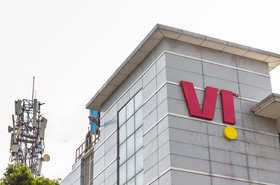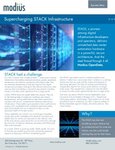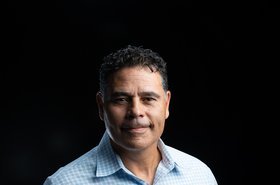In the UK, mobile network operators (MNOs) have pledged to switch off their 2G and 3G networks by 2033, paving the way for the continued roll-out of 4G and 5G.
The picture across Europe is similar, although exact timelines for different countries (and operators) vary.
Retiring entire generations of equipment isn’t simple, and operators are busy preparing to minimize the operational, financial, and environmental impact of this transition.
Here comes the sunset
The need to phase out and switch off 2G and 3G cellular networks has been on the cards for some time.
Most operators in the US have done this, with AT&T shutting its 3G network down two years ago.
Although going 'cold turkey' on 2G will be far more challenging due to its importance for IoT technology, by the beginning of 2023 ten countries had already retired their 2G networks.
While most regions have set regulatory deadlines for 2G or 3G switch-offs, many operators would already be on this path regardless, as they look to re-farm 2G and 3G spectrum for 4G and 5G services.
The market constantly demands tech advancement with higher bandwidth, higher speeds, and more advanced capabilities.
Not only does this mean 4G and 5G bring greater revenue opportunities, but these new technologies are also more efficient in terms of power consumption by bit delivered.
Because of this, older generations of mobile networks are gradually becoming commodity products.
Retiring them means operators can save on operating and land costs, freeing up investment for higher-yielding tech elsewhere.
Of course, removing all this legacy hardware at scale is no mean feat. There’s a ton of complexity that comes with scoping what needs to be decommissioned and ensuring you have the capabilities to power down this equipment safely while minimizing any potential disruption. But it’s more than just an operational challenge.
There’s a significant financial burden in decommissioning equipment, plus considering the capital investment already made in this technology operators are now retiring, managing this process as cost-effectively as possible can quickly become a make-or-break for the business.
Sweat, resell, recycle
However, with change comes opportunity. This challenge brings a once-in-a-generation window for telecom operators to adopt circular economy principles to turn burden into profit in the short and long term.
From a conscious sweating strategy built on reusing refurbished equipment to reselling or recycling unwanted equipment, the circular economy offers several green (and often profitable) routes into the sunset.
Leveraging old hardware through the circular economy presents a path to recouping some of these losses, or even turning a profit, but it requires smart decision-making often down to the level of individual pieces of equipment. There are lots of considerations here.
The first decision involves the trade-off between immediate power savings from more modern equipment against sweating old equipment for as long as possible.
While you could remove all legacy hardware as soon as possible, some operators may choose to be more strategic, refurbishing hardware based on the availability of spare parts in the market. This can be considerably cheaper and can buy operators time for next-generation equipment to come down in price.
Operators who align their timelines with market dynamics could stand to generate millions of pounds from reselling retired equipment where the market still exists.
However, the longer you wait, the less valuable this equipment becomes as other operators saturate the market. And on 2G/3G and even 4G, the window for resale is gradually closing.
But there’s another option for this hardware that shouldn’t be overlooked. Because older equipment is typically made up of valuable raw materials, the recycling value alone can sometimes go a long way to fund the entire recovery and decommission model.
Naturally, this also contributes to sustainability goals like Scope 3 reduction, including upstream and downstream indirect emissions.
Going circular
For the 2G and 3G switch-off and beyond, operators are decommissioning old equipment and looking to effectively manage the transition and unlock value from the process via the circular economy.
Through smart resale or recycling initiatives, operators are not only cutting the maintenance costs of old equipment but also recovering a lot of their initial investment, bolstering financial resilience while also aligning with sustainability goals.
Several operators including EE UK, part of the BT Group, and Telecom Italia TIM are leading the charge here, and we are seeing two distinct approaches in the market.
Some are urgently transitioning hardware and looking to resell as much as possible, driven by market demands and the pace of technological advancements.
Others are pursuing a more balanced, three to five-year approach where network hardware is strategically swapped out and opportunities to refurbish, resell, or recycle equipment are scoped out on a longer term.
Both approaches have merit. Deciding which is right requires close consideration of different market, hardware, and business factors. Whether the approach is gradual or opportunistic, collaboration with specialists in the field can help streamline the management of spare parts supply, maximizing the potential for reuse and refurbishment.
So, while the sun is setting on 2G and 3G, and rising on 4G/5G, the way the industry gets to this point could be more impactful than the new technology itself.
A telecoms industry powered by the circular economy will not only be more resilient and well-equipped to manage this transition but will be more environmentally sustainable long term. In the short term, however, time is money.
Whether operators choose to capitalize on power savings from replacing equipment, high resale demand, or refurbishing assets while spare parts are still cheaply available, the quicker they start, the quicker they will reap the rewards.









